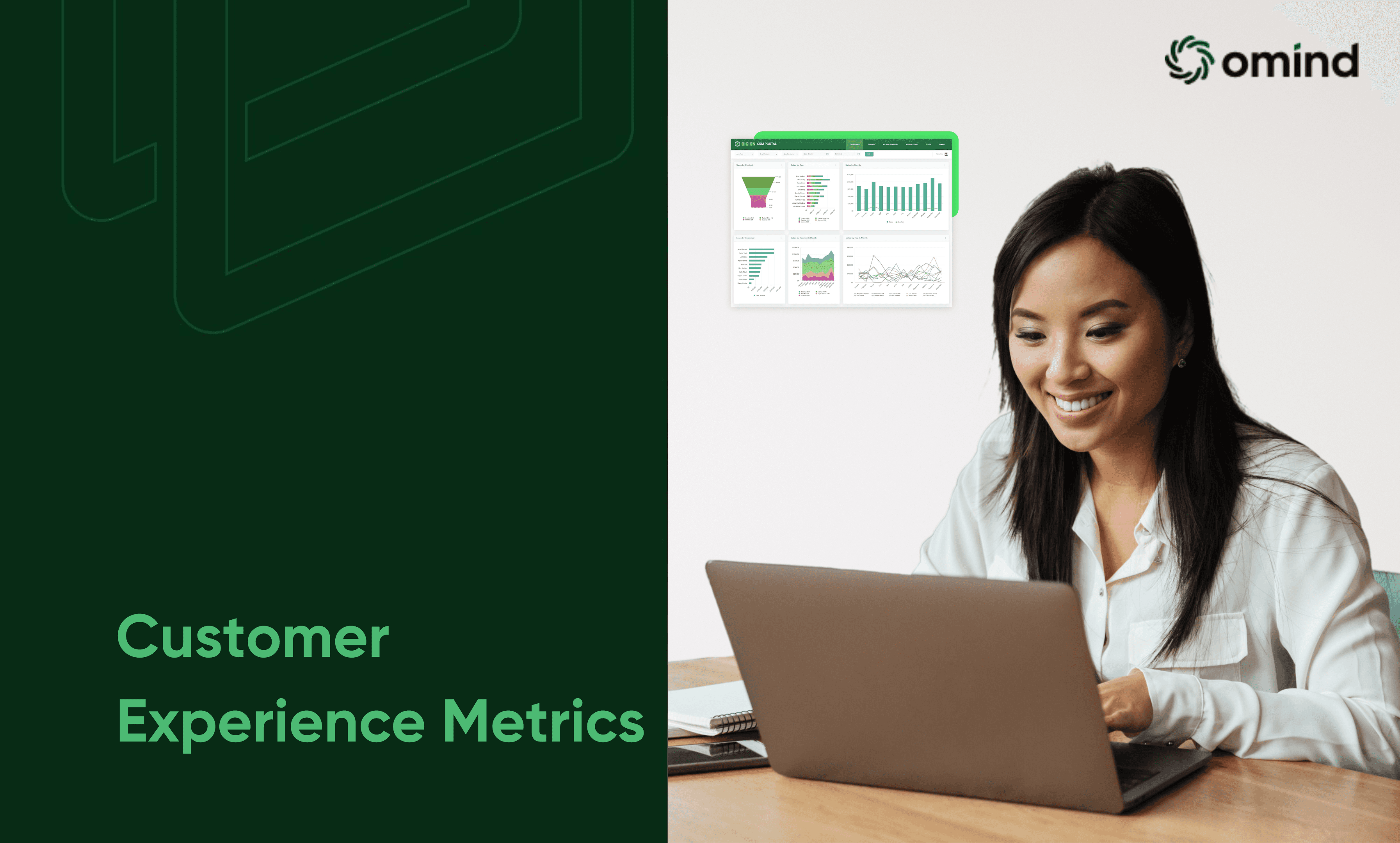The compass that guides successful enterprises is not just the innovative products or advanced technology—it’s how effectively they attain customer experience (CX).
In this high-stakes game, CX metrics are your radar—helping you detect subtle shifts in customer satisfaction and loyalty long before they appear on the surface. By carefully analyzing these metrics, you can anticipate customer needs while refining their strategies in real-time.
Ready to take a big step toward long-term engagement and profitability?
In this blog, let's dive into how using the full scope of CX metrics can transform mere data points into a profound competitive edge.
Benefits of Measuring CX

Akin to harnessing a powerful analytics engine in a high-performance sports car, measure customer experience to adapt your business with precision and adaptability.
Here's how they benefit your company:
1. Pinpointing Customer Needs
Just as advanced algorithms predict market trends, effective CX measurement provides real-time insights into customer preferences and behaviors.
This allows businesses to develop products and services that hit the mark, enhancing user satisfaction and fostering loyalty.
2. Enhancing Decision Making
Data is the currency of decision making. Isn’t it?
By analyzing CX metrics, leaders gain access to actionable data that supports strategic decisions—from product development to marketing campaigns.
3. Optimizing Resources
Efficient resource allocation is crucial, especially in tech and business. Measuring and tracking CX helps identify high-impact areas that promise the most return on investment.
This allows you to allocate your time, budget, and manpower more effectively.
4. Driving Innovation
Regular CX feedback inspires continuous improvement and innovation in business processes and customer service strategies.
5. Building Brand Advocacy
In the digital age, a recommendation from a loyal customer can be as valuable as a well-placed advertisement, amplifying your brand’s reach and influence organically.
6. Predicting Future Trends
Similar to how machine learning models predict outcomes based on historical data, analyzing trends in CX metrics can help predict future customer behaviors and market demands. .
5 Key Customer Experience Metrics You Must Use

Customer experience (CX) metrics are the vital signs of your company's relationship with its customers. By tracking various interactions through these metrics, businesses can gauge how well they are meeting customer expectations and identify areas for improvement. Effective use of CX metrics not only enhances individual customer interactions but also boosts overall customer satisfaction and loyalty, driving the long-term success of the business.
1. Net Promoter Score (NPS)
NPS measures customer loyalty based on one simple question:
On a scale of 0-10, how likely are you to recommend our company/product/service to a friend or colleague?
It categorizes responses into:
Promoters (9-10)
Passives (7-8)
Detractors (0-6).
This metric is a key indicator of customer loyalty and can predict business growth. A high NPS suggests that customers are not only satisfied but are also enthusiastic enough about your services to recommend them.
This can lead to increased sales and more organic growth through word-of-mouth.
How to calculate?
Here’s it is:
NPS = Percentage who are Promoters - Percentage of customers who are Detractors
The result is a score ranging from -100 to 100, where a higher score indicates better customer loyalty.
2. Customer Satisfaction Score (CSAT)

CSAT measures customer satisfaction with a service, transaction, or interaction on a scale, typically 1-5 or 1-10.
This metric is straightforward and targeted, providing immediate feedback on specific aspects of the customer experience.
Where do we use it?
CSAT is invaluable for evaluating how customers feel about a recent interaction or purchase. It is especially useful for pinpointing issues in specific areas of service, allowing businesses to make quick adjustments.
Take the number of satisfied customers (those giving a rating of 4 or 5 on a 5-point scale, or 8 to 10 on a 10-point scale)
divide by the total number of responses
Then, multiply the result by 100 to get a percentage that represents the proportion of customers who are satisfied with their experience.
3. Customer Effort Score (CES)
The Customer Effort Score measures the effort customers have to exert to get their issues resolved, requests fulfilled, or products and services used.
It asks customers to rate the ease of their experience on a scale, typically from "very easy" to "very difficult."
Impact:
A fundamental principle behind CES is that the easier it is for a customer to interact with your company, the more likely they are to remain loyal.
It’s a powerful tool for businesses aiming to improve their service efficiency.
Calculation Method:
Average the scores from customer responses to the question, "On a scale from 1 to 7, how easy was it to handle your request?"
Lower scores indicate higher effort, which can be a red flag prompting immediate improvements.
4. Customer Lifetime Value (CLV)
Customer Lifetime Value represents the total revenue a business can reasonably expect from a single customer account throughout the business relationship.
It considers the following criteria from a customer:
Repeat sales
Subscription renewals
Other revenue streams.
CLV is critical because it links customer experience directly to tangible business outcomes.
This CLV metric helps businesses:
Allocate resources more effectively
Strategize on customer acquisition and retention
Ground these efforts in economic reality.
Calculation technique:
Calculating CLV can differ based on business models.
For a subscription-based service, you can calculate CLV as shown below:
CLV = (Average Revenue per User (ARPU) x Average Customer Lifespan) - Acquisition and Servicing Costs
Here’s a breakdown:
Average Revenue per User
ARPU = Total revenue/Number of subscribers.
It represents the average amount of money received from each customer and is more comprehensive than just the subscription value, as it can include upsells, cross-sells, and additional one-time payments.
Average Customer Lifespan:
This measures how long, on average, a customer continues to generate revenue for the company before churning.
This is typically expressed in the same time units used for revenue recognition (e.g., months or years).
Read this article for more information: Mastering Customer Experience: Essential Metrics
5. Customer Churn and Retention Rate
Both metrics are vital for businesses relying on recurring revenue.
Churn Rate
This metric reflects the percentage of customers who stop doing business with a company during a given period.
It’s a critical metric for businesses with a subscription-based model.
Calculate as follows:
Take the number of customers lost during the period
Divide it by the number at the start
And multiply by 100.
Note: High churn rates might indicate underlying issues in customer satisfaction or product fit.
Retention Rate
Conversely, this is the percentage of customers who continue to do business with the company over the same period.
Calculation:
Divide the number of active customers at the end of the month by the number of active customers at the start of the month
Then multiply by 100 to get the percentage.
Note: High retention rates often correlate with customer satisfaction and long-term business success.
You might ask: Customer Satisfaction and Retention: Is There a Correlation?
The Bottom Line
Understanding these customer experience metrics provides valuable insights into the health of your customer relationships. Plus, diligently monitor and respond to these metrics so you can enhance the overall customer experience and ensure sustained business growth.
Hope we’ve guided you in making strategic decisions that foster both growth and customer satisfaction.
Looking to elevate your customer experience strategy?
Partner with Omind, the AI-powered solution that transforms customer feedback into actionable insights. Our platform is designed to help you measure, analyze, and enhance customer satisfaction efficiently, ensuring your business stays ahead of the curve.
Experience the power of informed decision-making with Omind.
AUTHOR
Team Omind
Empowering Businesses with Unified Customer Experience Platform, Leveraging Advanced AI and Intelligent Automation.
PRODUCT
Unified CXM
Share LINK
Related Blogs




